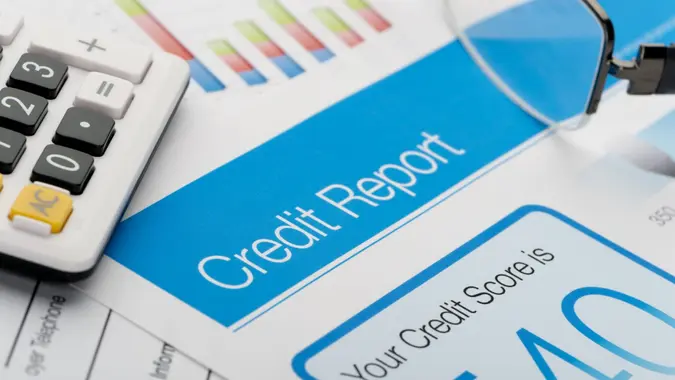Your Credit Score Should Be Higher — 5 Factors That Could Be Holding It Back

Commitment to Our Readers
GOBankingRates' editorial team is committed to bringing you unbiased reviews and information. We use data-driven methodologies to evaluate financial products and services - our reviews and ratings are not influenced by advertisers. You can read more about our editorial guidelines and our products and services review methodology.

20 Years
Helping You Live Richer

Reviewed
by Experts

Trusted by
Millions of Readers
Credit-scoring models have various ranges — from “poor” or “subprime” to “excellent” or “super-prime” — depending on the model. The average credit score in 2024 was 715, according to Experian. That score is considered “good,” according to the FICO model. Having a higher credit score comes with advantages, such as better financing rates and higher credit card limits.
“It’s good to have a credit score goal in mind, but remember that what is considered a good credit score can depend on the model, the lender and the particular type of credit for which you’re applying,” said Margaret Poe, head of consumer credit education at TransUnion. “Since your score can fluctuate as information is added, removed or changed on your credit report, aiming for a credit score range can be a useful way to establish your credit health goals.”
While the targeted range may be different for everyone, there are steps to take to get to your desired score. “If your credit score isn’t where you want it to be, understanding common credit score factors can help you turn it around. There are different companies that offer credit scores based on different models that may be used, but the factors are generally similar,” Poe said.
Here’s a breakdown of the factors that could be holding back your credit score.
Payment History
Poe pointed out that payment history tends to be one of the most influential credit score factors. For example, under the FICO scoring model, payment history counts for 35% of your score.
A payment that’s 30 days late can impact your score by 100 points or more depending on your credit score and the scoring model used, per Chase.
Credit Utilization
“Similarly, your credit utilization ratio can play an important role in your credit score,” Poe said.
According to the FICO model, credit utilization, which is labeled as “amounts owed,” is worth 30% of your score.
“Your credit utilization ratio is a percentage of how much credit you’re using compared to your overall credit limit,” Poe said. “If you have three credit cards and each one has a credit limit of $3,000, your total credit limit is $9,000. If you have a balance of $4,500 spread across those cards, your credit utilization rate is at 50%.”
Poe explained that popular advice is focused on aiming for a credit utilization rate of 30% or less, but the lower, the better.
“So if you have credit card debt, it could be holding you back from reaching your credit score goals,” she said. “Paying that down efficiently can help you build healthy credit and could save you money on interest charges.”
Length of Credit History
Length of credit history is another factor that can impact a credit score.
“Length of credit history represents 15% of the score,” said Michael Sullivan, a personal finance consultant with Take Charge America, one of the nation’s leading credit counseling and debt management agencies. “This is just a measure of how long you have used credit and how long you have had particular accounts. If lenders have stayed with you for a long period of time, it is likely you have earned their trust. If you got your first credit approval last year, no one is vouching for you. History takes time to develop and just as long to change, so this is not a factor that most consumers can easily change.”
New Credit
The amount of new credit one has could also impact a credit score.
“New credit represents 10% of the score,” Sullivan explained. “The assumption is that a consumer who applies for multiple loans in a short time may be preparing for a financial disaster or maybe the victim of some kind of scam. Credit accounts should be added gradually so that the impact of new credit is slowly absorbed.”
Credit Mix
Lastly, credit mix is another factor.
“Credit mix represents 10% of your score,” Sullivan said. “If you have been approved for a mortgage, an auto loan and three credit cards, you get a slight boost over having used fewer credit options. This also takes some time to develop. It is not wise to apply for a mortgage, a car loan and a credit card in the same month because it may improve your credit mix, but it can destroy the new credit part of the score.”
 Written by
Written by  Edited by
Edited by 























